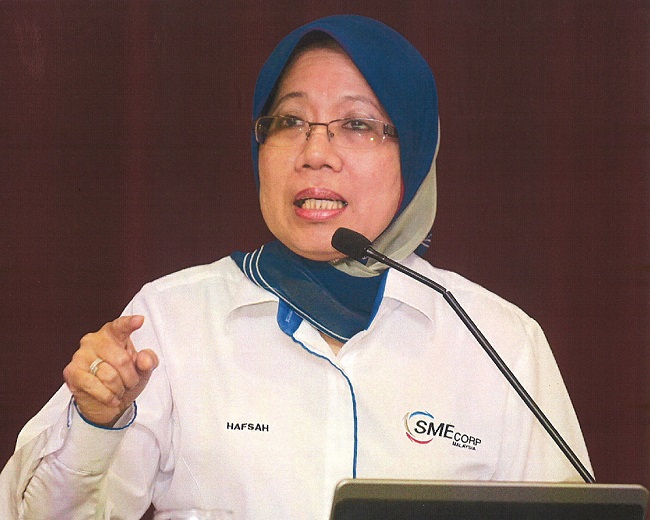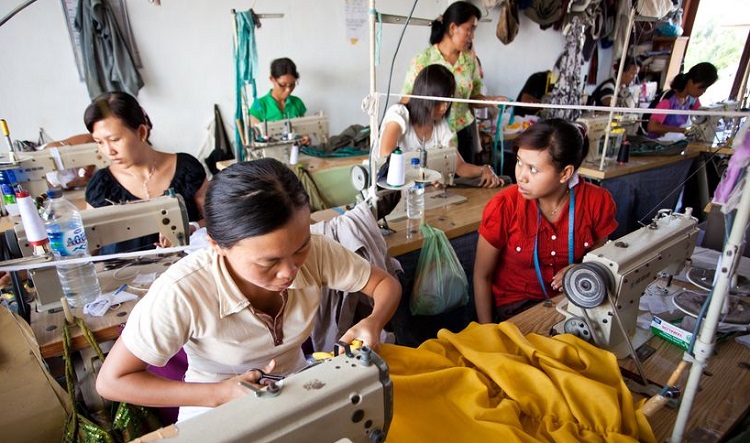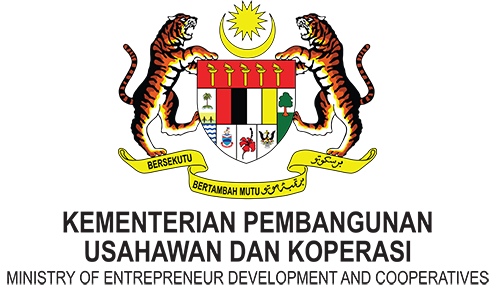- Productivity-driven, innovation-led masterplan to drive SMEs forward
- Low-cost foreign labour a major challenge, lack of interest in upskilling

WITH low productivity hanging like a heavy mill around Malaysia’s ambitions to be a developed nation and escape the middle-income trap, it is no surprise that the focus of the SME Corporation Malaysia is on executing its SME Masterplan 2012-2020.
“The entire basis of the masterplan is productivity-driven and innovation-led, and we are putting in programmes and activities to energise the plan moving forward,” says its chief executive officer Hafsah Hashim.
SME Corp is a government agency dedicated to developing the SME (small and medium enterprise) sector in the country, and was appointed the central agency for the SME Masterplan (PDF), which seeks to create globally competitive SMEs.
Among the various initiatives outlined in the masterplan are six High Impact Programmes (HIPs), with two of them linked to technology and innovation.
The six HIPs have been allocated a total budget of RM71.7 million (US$17.7 million at current rates) for 2016. Out of that, HIP 2 (Technology Commercialisation Platform) will receive RM30 million (US$7.4 million) and HIP 6 (Inclusive Innovation) will get RM6.5 million (US$1.6 million).
The grant that recipients get allows them to file a patent for their product, run a proof-of-concept (POC), and to commercialise their product, according to Hafsah.
As an example of the Inclusive Innovation programme, she points to how SME Corp is helping commercialise a pineapple-peeling machine.
“It is not rocket science but solves a real need in that is can peel 100 pineapples in 30 minutes, and was invented by a farmer.
“This is how we try to facilitate an innovation and take it to the next level,” she adds, arguing that automation, innovation and commercialisation are interlinked.
The pineapple-peeling machine is one of eight products that made it to the final stage from 262 innovations looked at from January 2015 to January 2016.
Under HIP 2 (Technology Commercialisation Platform), from May 2014 to January 2016, 594 products were screened, with 62 approved for funding with seven already completed and commercialised.
What’s even more impressive is that 100 pieces of intellectual property (IP) were registered and transferred to industry for commercialization, with their use eventually leading to higher automation, says Hafsah.
ICT impact on SMEs

A recent survey conducted by SME Corp with 2,000 SME respondents on their levels of ICT adoption reveals a mixed bag.
While Hafsah (pic above) felt that the use of digital devices – tablets, laptops, smartphones and desktops – was acceptable at 85.4%, the 78.8% level of Internet adoption was cause for concern, considering how almost every business has to be online for marketing, discoverability and communications purposes.
But it is the low level of SMEs doing business online that has her really concerned.
“Only 19.6% of our SMEs are conducting e-commerce, and we constantly find that they still have a lot of scepticism over the medium – with their main concern over the issue of trust,” she says.
Research by the OECD (Organisation for Economic Cooperation and Development) also reveals that Malaysia’s e-commerce growth ranges from 10% to 15% a year, which is below the 20% to 25% rate that is required to reach ‘world-class level.’
On the bright side, Hafsah sees lots of potential for Malaysia to grow its e-commerce base, and she plans on doing this by solving another problem: The relatively low level of female participation in the workforce.
“We have created a ‘netpreneur’ (Internet entrepreneur) programme specifically targeting housewives, including those who were former executives who turned their back on their corporate careers to focus on their children.
“Our programme, called Hearts for Housewives, helps bring them back into the economy while starting an e-commerce business from home to generate some additional revenue for the family.
“And actually some of them have even started generating more income than their spouses,” says Hafsah, clearly delighted at being able to lure this latent talent back into the workforce.
‘Stubbornly’ low productivity rates

Hafsah delight here is tempered by her frustration over the “stubbornly” low productivity rates in SMEs.
Those rates have been chronicled often enough. An OECD report on structural policy in Malaysia quotes a 2012 National SME Development Council report on SMEs which face increasing difficulties in recruiting and retaining skilled workers at the technical, supervisory, and managerial levels.
If the talent situation is left unchecked, Malaysian SMEs would face steep challenges when it comes to growth.
Perhaps no-one is more familiar with the challenges SMEs face in raising productivity than Hafsah, who gives a rating of 2 out of 5 to their level of automation, chiefly due to the abundance of low-cost labour.
No-one is more qualified to rate SMEs as well, given that Hafsah has held the CEO (chief executive officer) role since March 2005 – before SME Corp was established, she even led another SME-centric agency, Smidec (Small and Medium Industries Development Corporation), as its CEO.
“We have been trying to get industry, especially SMEs, to increase their productivity through automation with policy tools since the 1990s,” she says.
Under the 9th Malaysia Plan for instance, which ran from 2006 to 2010, a soft loan was introduced for companies to purchase equipment to increase their automation.
But what happened was that they took the loans and instead of replacing a manual production line with automated ones, just added the automated line to their existing manual ones.
“We did not see a declining rate of labour among those who took loans. As a result, our attempt to reduce the workforce via automation did not work then,” Hafsah laments.
She is also familiar with efforts made by the palm oil industry to reduce labour through automation.
“As a member of the Palm Oil Development Board back in 1992, we were already talking about mechanising the harvesting of the fruit, and had a mechanised pole that had won innovation awards.
“But the oil palm companies did not want to use it – so to say that we [the Government] did not prepare or work on promoting automation is wrong,” she stresses.
What has crippled all previous efforts has been the availability of cheap, low skilled and abundant foreign labour, she argues.
Even the focus of moving manufacturing up the value chain in the Industrial Master Plan 2 from 1996 to 2005 – through what Hafsah calls Manufacturing Plus Plus – did not move the needle much.
Adding higher value-add properties to manufacturing through design, branding and productivity however relies on a highly skilled workforce.
Again, most Malaysian companies were found to be lacking in their desire to invest in higher skills training – and the higher salaries that are commensurate with such skills – not to mention the upfront capital investment in machinery as well.
“You just cannot move up the value chain without a skilled workforce, and even with the Manufacturing Plus Plus goal in the Industrial Master Plan 2, we went back looking into the cries of the construction and plantation sector,” says Hafsah.
With those earlier policy moves not being successful, injecting automation, technology and innovation into SMEs are tools too critical to be left to industry to adopt, especially in Malaysia, with the cushion of abundant and cheap low-cost labour acting as a huge disincentive.
The Singapore Government has provided a timely reminder of this in its recent Budget 2016 with its heavy focus on automation, especially robotics, and ICT to help its companies increase their competitiveness.
However, Singapore’s motivation is the polar opposite of Malaysia’s – as the world’s most expensive city, its SMEs have to squeeze out all the efficiency they can from their manufacturing or business processes.
Related Stories:
SMEs and tech adoption: High expectations, marginal impact
ICT adoption: Vendors, SMEs need a new paradigm
Singaporean SMEs Part 1: The government’s guiding hand
Indonesian SMEs Part I: Driving the economy
For more technology news and the latest updates, follow us on Twitter, LinkedIn or Like us on Facebook.






















